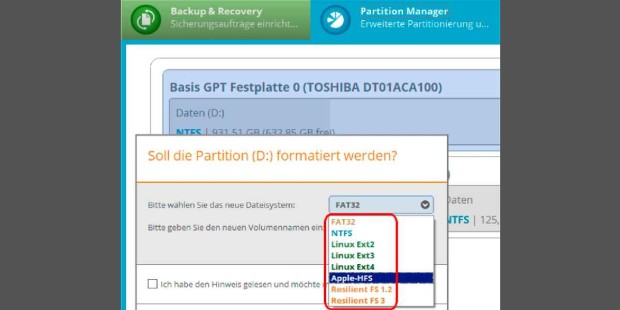

- #Mac read ext4 how to
- #Mac read ext4 install
- #Mac read ext4 manual
- #Mac read ext4 code
- #Mac read ext4 trial
I believe I followed the install instructions including rebooting. I am a poor dev Dad with so many diapers to buy.
#Mac read ext4 trial
I am running the Paragon trial right now, and it just works, which is nice. I plugged in an SD card loaded with a Raspberry PI image and all partitions showed up on the desktop.
#Mac read ext4 manual
No opaque terminal based manual mounting commands required. Since it is native OSX can automatically mount drives and partitions when they are inserted.
#Mac read ext4 how to
How to mount and access Ext4 partitions on Mac
#Mac read ext4 code
The problems do not seem to be debug-able without support, except at the source code level of course. It may work or may not with current OSX but the installation instructions are ambiguous and incomplete. Netapp hciĮnjoy this tip? Subscribe to the OSXDaily newsletter to get more of our great Apple tips, tricks, and important news delivered to your inbox! Enter your email address below. This is particularly helpful for USB thumb drives and external disks that you want to use for quick file storage and sharing outside of a network. By the way, an alternative for those who wish to safely read and write files between OS X and Linux and Windows for that matter by using an external drive are probably better off formatting a drive for maximum compatibility with the MS-DOS file system, which can be accessed by just about every operating system out there. That means you can access files and copy files from the EXT volume over to the Mac, but not vice versa more on using EXT write support in a moment.Īgain, enabling EXT write support is not recommended. Where sparse-file is the file name, and the number at the end is the file size in bytes.Mac users who work with multiple platforms may notice that OS X is unable to mount EXT partitions on its own, and thus anyone wishing to mount and read EXT drives and other file systems will need to rely on a third party utility. Go to the folder where you need to create a file and type the following:įsutil file createnew sparse-file 1000000000 Copy When the command create is performed, by default it creates a file that is not a sparse one. In Windows, sparse files are managed with the help of fsutil tool (a file system utility).


Type “cmd” in the search field and run it as Administrator. In Windows, we’ll be using the command prompt for this purpose. For example, it may generate disk overfill issues when data is copied over the existing part of the file which is marked as sparse. When the file system containing files of this specific type is low on space, it may lead to unpredictable situations. Besides, some disk management utilities may have issues with displaying free disk space. Over time, it may result in reduced performance. For example, if the original size of a sparse file (with all of its zero bytes) is 500 MB, and the quota limit for the user account where this sparse file is created is only 400 MB, such situation generates an error, even if the actual disk space occupied by this sparse file is only 50 MB.Īs to the hard disks where such data is stored, they are also subject to fragmentation, because the file system will write data to sparse files as and when necessary. One more disadvantage is that you can’t copy or create a sparse file if its nominal size exceeds the amount of available free space (or quota restrictions applied to user accounts within the operating system). Users have to be careful when dealing with such files: a sparse file of a few megabytes may suddenly turn into a several-gigabyte monster when an application that doesn’t support this file type copies it into a directory. If a certain program cannot recognize or use such files, it will save a sparse file in its original – uncompressed – form, and there’s no advantage to talk about. However, the advantages of sparse files are limited to the applications that support them. Large sparse files are created relatively quickly because the file system doesn’t have to pre-allocate disk space for writing zeros. The space for storing data is allocated automatically as more and more information is written. The biggest advantage of sparse files is that users can create very large files which take very little disk space.

🐧🍏 Sparse Files in Windows, Linux and MacOS, File Systems NTFS, REFS, Ext3, Ext4, BTRFS and APFS 🐧🍏 Pros and cons


 0 kommentar(er)
0 kommentar(er)
